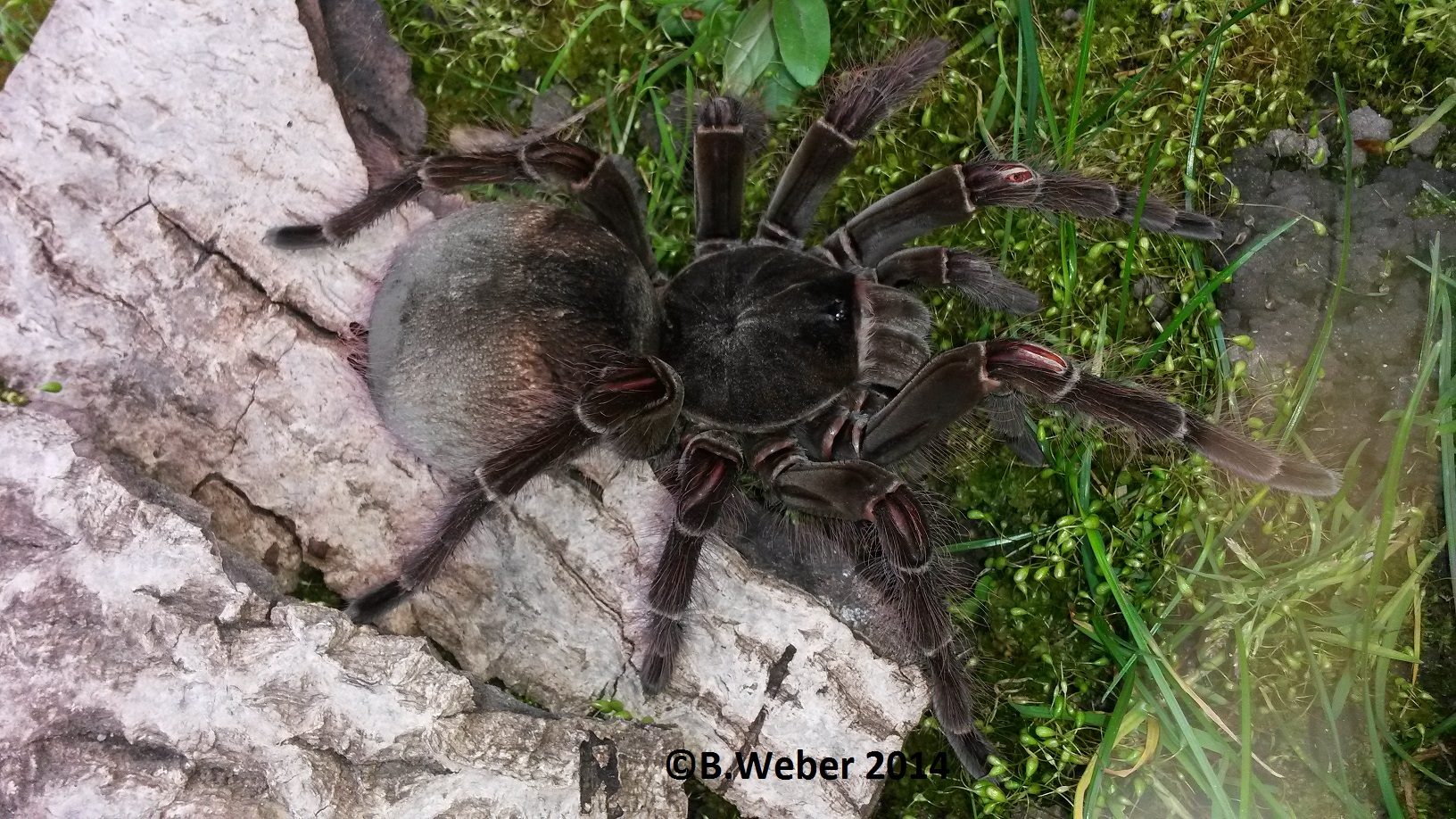Theraphosa blondi
Goliath Birdeater (3-4cm)
Latreille, 1804
Species Info:
Origin
Lifestyle
Temp
Humidity
Leg Span
Disposition
Suitability
This is officially recorded the biggest Tarantula species! The Guinness Book record holder – the dated specimen caught in 1999 reaches 28cm in leg span, it is not only the biggest but also heaviest (over 120 grams). This species is a real monster, it is a giant, robust, heavy bodied, fast and powerful Spider. This is probably the most popular species in the Hobby. Uniformly dark brown in body colour covered with dense short setae (hair) which gives it a beautiful sued appearance. There are also some longish reddish hairs on the abdomen and legs. It is interested to observe the changes of coloration of this giant from moult to moult as it can vary from jet black to pale orange.
In wild it inhabits very moist (even swamp) deep rainforests where it lives in deep burrows. They feed on any capable sized prey: insects, small mammals, frogs, lizards and has also been recorded to feed on lethal venomous snakes (West, 1992). In captivity it needs a very ample terrarium with a thick layer of humid substrate. and a big water bowl for drinking. Regular misting of the terrarium provides an increased humidity which is critical for this species. It readily utilizes artificial retreats and you can also decorate the enclosure with artificial plants. This species doesn’t spin much web. In spite of the this Tarantula often being bred as spiderlings it is very hard to breed. The mating is usually successful but females do not produce the eggsacks, or if they do the eggs are often infertile. Eggsacks usually contain less than 100 eggs but the offspring are rather large and around 2cm.
There are a few points about this unique species a potential keeper must bear in mind. Humidity is important to this species and require regular misting, however it also important to have good ventilation so that the enclosure does not get stagnant as this can also be harmful. This species is a voracious eater and fast grower – it can eat and eat and eat and eat…. until the abdomen looks fit to burst, so try not to overfeed it to much. This species also has urticating hairs (type III) which are considered the nastiest amoung tarantula fauna and can cause serious irritation to the skin. Just the slightest movement of one rear leg rubbing against the abdomen of the is monster raises a whole cloud of this hair. It is also not a docile pet, they have 1.5 – 2cm fangs and can strike a very painful bite. When this monster is distributed it will stridulate which is a hissing sound let you know it is annoyed.
As you can see this spider is definitely not a toy and demands a lot of respect and common sense when keeping it. It is an interesting species to observe, nice, attractive and a good display Tarantulas the sort of thing every serious keeper keeps or has kept but is not a suitable species for the inexperienced.
